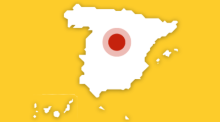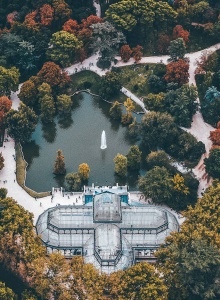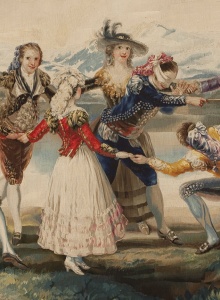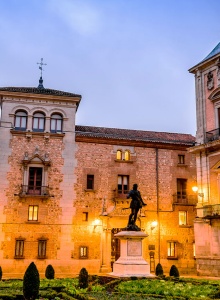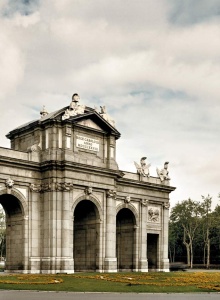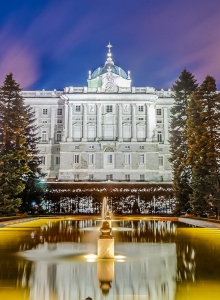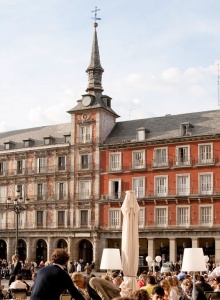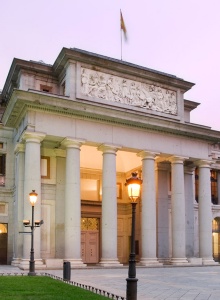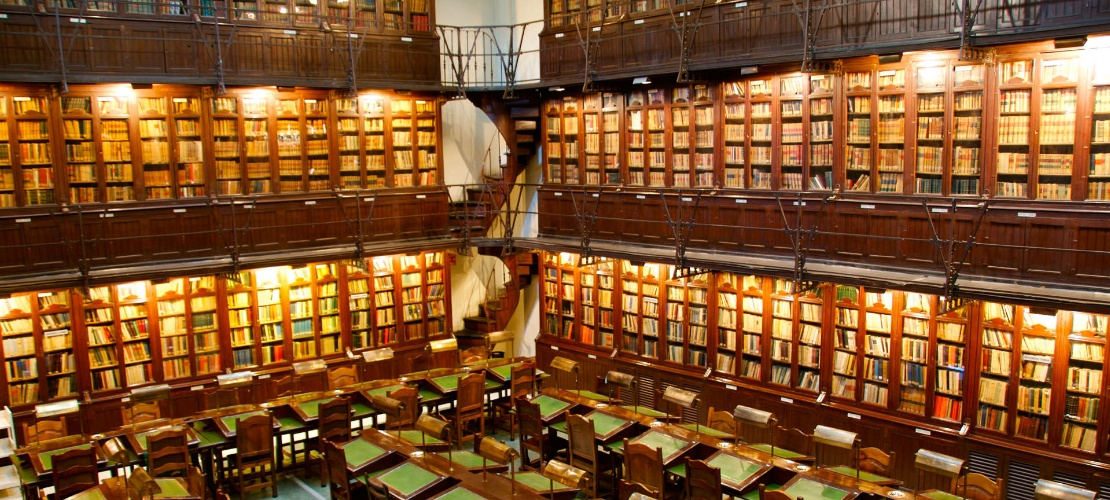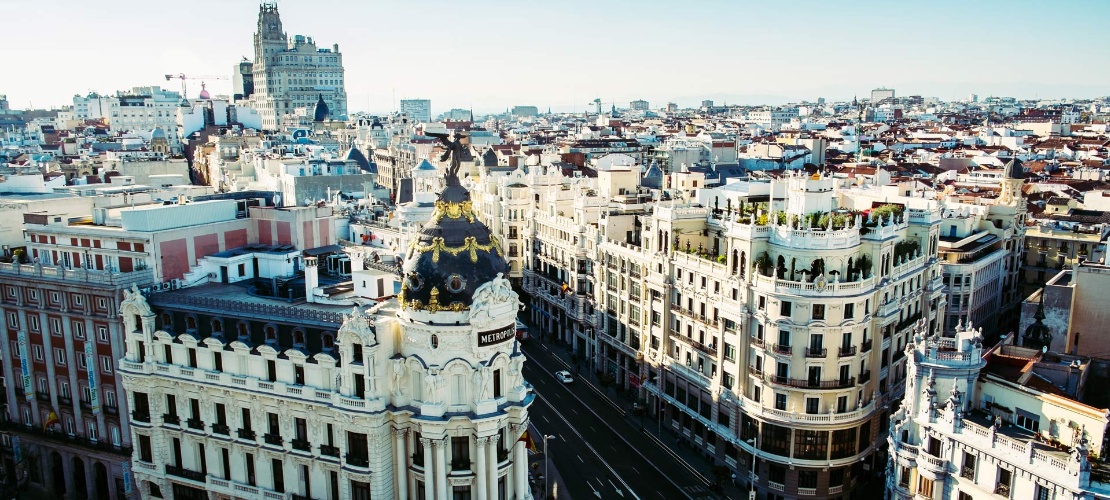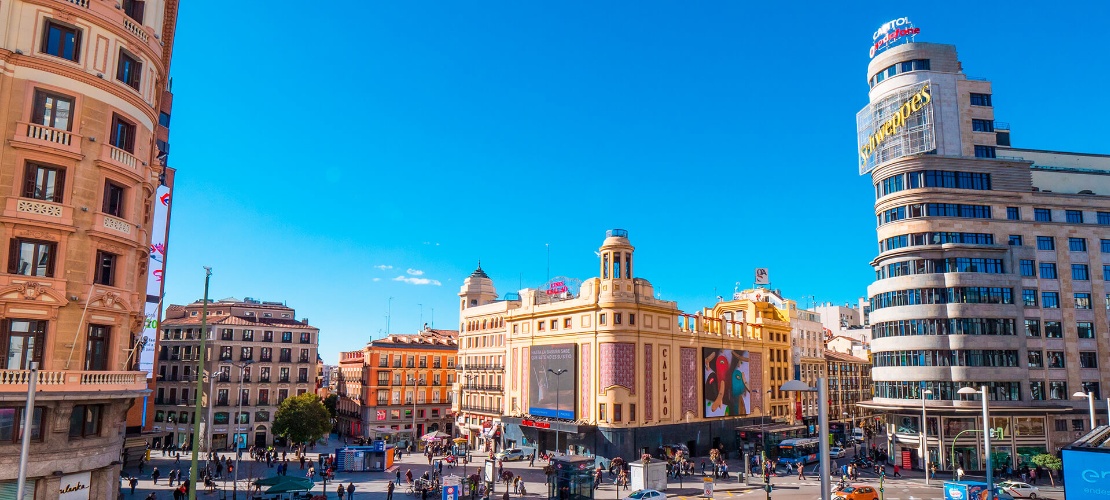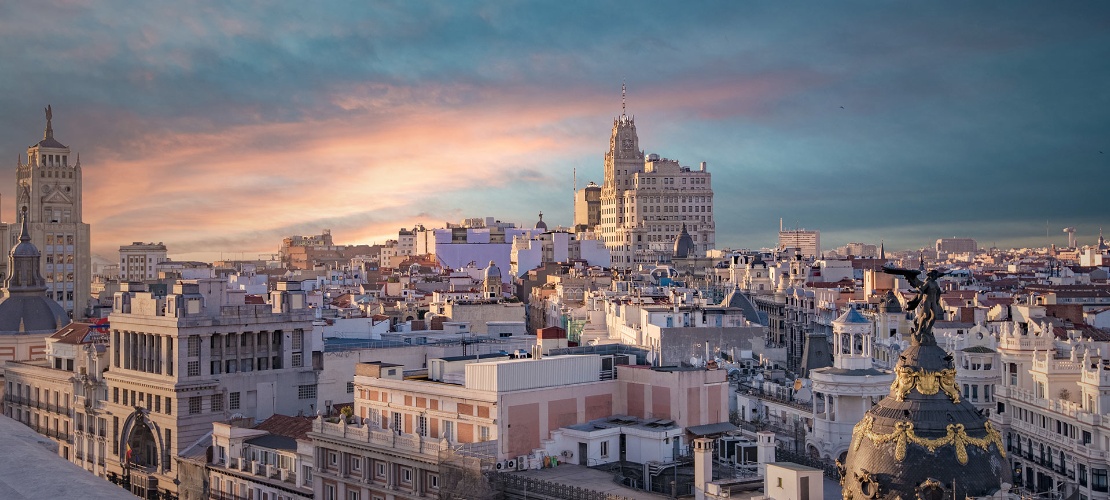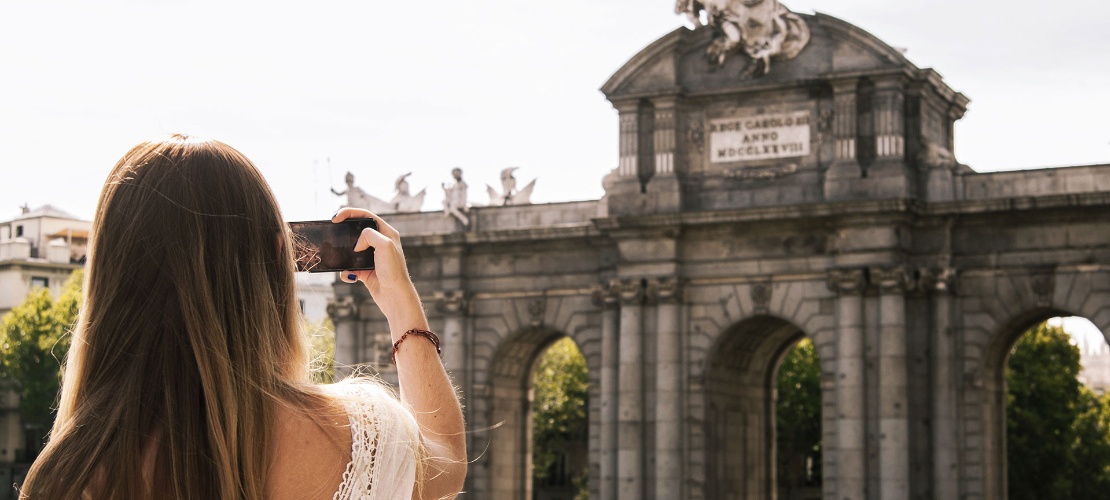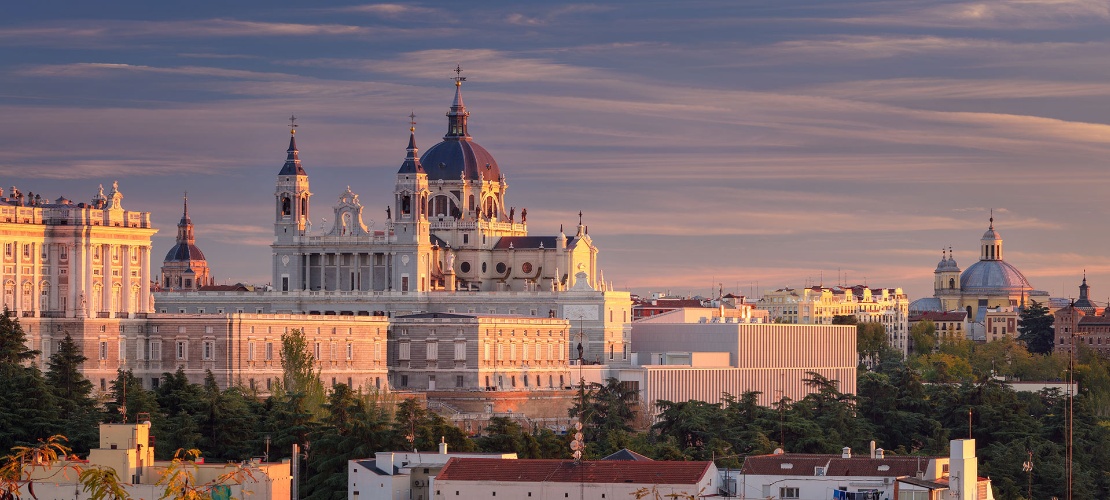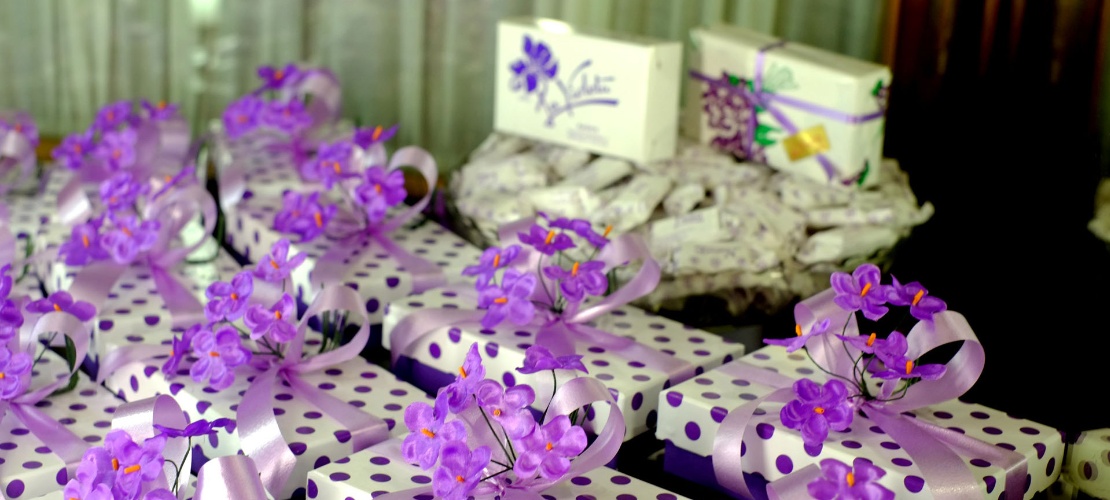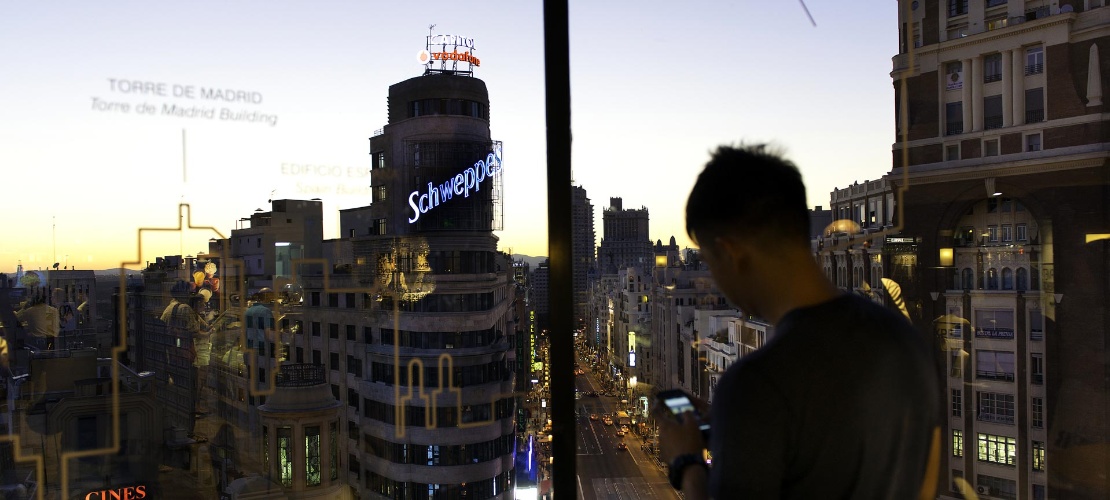
Madrid, cheerful and vibrant at all hours, is famous for being an open city with all kinds of people from anywhere in the world.
In addition to its famous museums, busy streets dotted with all kinds of shops, restaurants with world cuisine and unbeatable nightlife, Madrid will surprise you with its tranquil historic spots that charm everyone walking by. Here you'll find traditional family-run, century-old bars where friends meet up for a drink, every style of neighbourhood and cultural centres that offer up an alternative type of tourism. Madrid's authenticity is hard to beat. It is welcoming and diverse. Madrid is, without a doubt, one of Europe’s most interesting cities.
Debe activar Javascript para poder utilizar este servicio
What to visit
Select from the list or hover over the map to find out about points of interest.
Activa JS
Other ideas for your trip
How to get there - transport information
Select the means of transport to see how to get there or how to get around at your destination.
How to get to aeroplane
-
Madrid Airport is 12 kilometres from the city centre, which can easily be reached by public transport.
-
By metro, take line 8. The trip costs an additional 3 euros on top of the cost of any ticket, and the journey is just over 30 minutes to the city centre.
-
By train, you can take the C-1 and C-10 Cercanías lines, which take around half an hour to reach the city centre.
-
By bus, you can get to the centre with the Exprés 203 Aeropuerto (operating 24 hours a day, journey time is half an hour and costs 5 euros); or regular buses 200 and 101. At night, you can also take the N27 line to Cibeles.
-
By taxi, the journey between the airport and the city centre has a fixed price of 33 euros.
-
By road, the most common route is along the M-40 ring road, and it takes just over 20 minutes.
How to get to train
-
If you are travelling to Madrid by train, you can reach two main stations: Atocha and Chamartín.
-
Madrid Station - Puerta de Atocha - Almudena Grandes:In the city centre.You can easily leave the station by public transport: It connects with the Metro (line 1) and the train (all Cercanías lines) and has several bus stops (lines 001, 6, 10, 14, 19, 24, 26, 27, 32, 34, 36, 37, 41, 45, 47, 54, 55, 57, 59, 85, 86, 102, 119, 141, 203, E1, C1, C2, C03, SE766, N9, N10, N11, N12, N13, N14, N15, N17, N25, N26) and taxi.High-speed trains to Barcelona, Seville, Malaga, and more destinations.
-
Madrid-Chamartín-Clara Campoamor Station:In the north of the city.Connected to the city's Metro (lines 1 and 10), train (lines C-1, C-2, C-3, C-4, C-7, C-8 and C-10), bus (lines 5, 66, 67, 124, 129, 134, 135, 150, 147, 173, 174, 175, 176, 178, SE704, T62, N24) and taxi.Connections to many national destinations, including Valencia, by high-speed train.
How to get to bus
-
If you want to get to Madrid by bus, you have two options in terms of stations: the Méndez Álvaro station, also known as the Estación Sur, and the Avenida de América station.
-
South Station:Public transport connections: Metro (line 6), train (lines C1, C5, C10), bus (lines 8, 102, 113, 148, 152, 156, N11) and taxi.
-
America Avenue Station:Public transport connections: Metro (lines 4, 6, 7 and 9), bus (1, 12, 52, 72, 73, 114, 115, 122, 200, C1, C2, N2, N4) and taxi.
How to get there by road
-
The main roads leading to Madrid are the A-1 (from the Basque Country), A-2 (Barcelona), A-3 (Valencia), A-4 (Seville), A-5 (Extremadura) and A-6 (Galicia).
-
Please note that large parts of the city centre are Low-Emissions Zones, where driving and parking are restricted. If you arrive in Madrid by car or motorcycle, consult the website of the City Council to find out about these areas. These restrictions apply equally to vehicles with foreign registrations. If your vehicle has an environmental rating from another country, check DGT website the table of equivalences of environmental ratings in European Union countries to know what restrictions might affect you. You can also get information before travelling through your accommodation in Madrid.
Practical information
-
Most points of interest are concentrated in the centre, which makes it easy to explore them on foot.
-
Tourist pass: for just one person. Unlimited travel on the metro, bus and train network. There are five types: lasting one, two, three, four, five or seven calendar days and with two different levels of coverage: A (to travel within the city of Madrid) and T (to also travel in the surrounding areas, as this pass includes all the other zones).
-
Please note that large parts of the city centre are Low-Emissions Zones, where driving and parking are restricted. If you arrive in Madrid by car or motorcycle, consult the website of the City Council to find out about these areas. These restrictions apply equally to vehicles with foreign registrations. If your vehicle has an environmental rating from France or Portugal, check DGT website the table of equivalences of environmental ratings in European Union countries to know what restrictions might affect you. You can also get information before travelling through your accommodation in Madrid.
How to get around in metro/tram
-
The Metro network covers the entire city of Madrid and connects it to other nearby towns within the region of Madrid.
-
It operates from 6:00 a.m. to 1:30 a.m. every day.
-
You can buy single tickets, passes for 10 journeys, or special tickets to the airport.
How to get around in train
-
The Cercanías train network covers the entire city of Madrid and connects it to other nearby towns within the region of Madrid.
-
It runs from 5.30 am to 11.30 pm.
-
You can buy single or return tickets, or a pass for 10 journeys.
How to get around in bus
-
The city bus lines usually operate between 6:00 am and 11:30 pm.
-
Night buses, known as “búhos” (owls), run from 11.20 pm or 11.45 pm to 5.30 am or 6 am, and until 7 am on Saturday nights and before public holidays. Most lines start at Plaza de Cibeles.
-
There are also intercity lines that connect the city of Madrid with other towns in the region.
-
There is a tourist bus that takes in the city's most emblematic monuments.
How to get around in other means of transport
-
By taxi:Easily identifiable white vehicles with a red stripe.A green light on the roof shows they are available.You can get a taxi from a taxi rank, stop one in the street (the ones with their green light on) or book one on one of the different apps.Taxis from Madrid-Barajas airport to Madrid city centre have a set price of €33 each way.
-
A different, quick and ecological way to travel around Madrid is by bike, whether by hiring one from the different companies that provide this service or using the municipal bike hire service, Bicimad.
Shows, festivals, sports...
View some of the most relevant events you will be able to enjoy at the destination.


